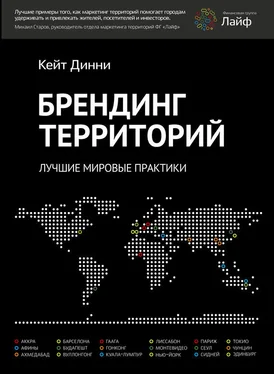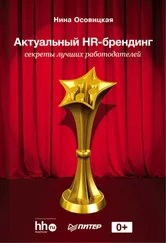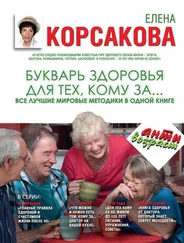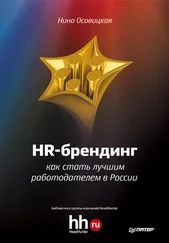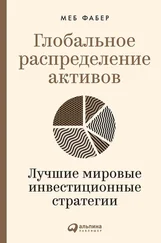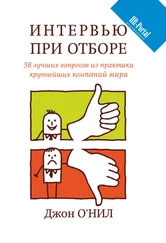1. Aaker, D. (1996), Building Strong Brands, The Free Press, New York, United States.
2. Aaker, D. and Joachimsthalen, E. (2000), Brand Leadership, The Free Press, New York, United States.
3. Accra Metropolitan Assembly (2007) , Medium Term Development Plan 2006–2009.
4. Accra Metropolitan Assembly (2009) , A New Accra for a Better Ghana: Medium Term Development Plan 2010–2013.
5. Advisory Council on the Environment (2008), Brand Hong Kong Review, ACE Paper 20/2008, available at: http://www.epd.gov.hl/epd/english/boards/advisory_council/files/ACE_Paper_20_2008.pdf(accessed 6 February 2010).
6. Ahmedabad Mirror (2010), A word worth thousand pictures: Amdavad, 3 January, p. 10.
7. AIIMalaysia (2010), Strictly Malaysian – Malaysia Boleh! available at: http://allmalaysia.info/msiaknow/malaysiana/malaysia_boleh.asp (accessed 28 January 2010).
8. Andersen, V., Prentice, R. and Guerin, S. (1997), Imagery of Denmark among visitors to Danish fine arts exhibitions in Scotland, Tourism Management, Vol. 18, No. 7, pp. 453–464.
9. Anholt, S. (2004), Brand New Justice, Second edition, Butten/vorth-Heinemann, Oxford, United Kingdom.
10. Anholt, S. (2006a), The Anholt-GMI City Brands Index: How the world sees the world’s cities, Place Branding, Vol. 2, No. I, pp. 18–31.
11. Anholt, S. (2006b), Public diplomacy and place branding: Where’s the link? Place Branding, Vol. 2, No. 4, pp. 271–275.
12. Anholt, S. (2007), Competitive Identity: The New Brand Management for Nations, Cities and Regions, Palgrave Macmillan, London, United Kingdom.
13. Anholt, S. (2008), Place branding: Is it marketing, or isn’t it? Place Branding and Public Diplomacy, Vol. 4, No. I, pp. I–6.
14. Anholt-Gfk Roper City Brands Index (2009), www.gfkamerica.com
15. Anon (2010), Absolutely, positively Wellington, Business Today, Issue 41 (Dec. 2009 – Jan. 2010), p. 53.
16. Ariffin, A.A.M. and Hasim, M.S. (2009), Marketing Malaysia to the Middle East tourists: Towards a preferred inter-regional destinations, International Journal of West Asian Studies, Vol. I, No. I, pp. 43–58.
17. Ashworth, G. (2009), The instruments of place branding: How is it done? European Spatial Research and Policy, Vol. 16, No. I, pp. 9–22.
18. Askegaard, S. and Gen G, (1998), Product-country images: Towards a contextualized approach, European Advances in Consumer Research, Vol. 3, pp. 50–58.
19. Astrup, S. (2009), Politiken.dk, febenhavns ry vinder pa topmade [Copenhagen’s reputation wins at summit], Politiken.dk, 19 December; available at: http://politiken.dk/klima/Topmode_i_Kobenhavn/article864489.ece(accessed 5 February 2010).
20. Avraham, E. and Ketter, E. (2008), Media Strategies for Marketing Places in Crisis: Improving the Image of Cities, Countries and Tourist Destinations, Butten/vorth-Heinemann, Oxford, United Kingdom.
21. Baker, B. (2007), Destination Branding for Small Cities: The Essentials for Successful Place Branding, Creative Leap Books, Portland, Oregon, United States.
22. Balibrea, M. (2001), Urbanism, culture and the post-industrial city: Challenging the ‘Barcelona Model, Journal of Spanish Cultural Studies, Vol. 2, No. 2, pp. 187–210.
23. Balmer, J.M.I. and Greysen, S.A. (2003), Revealing the Corporation: Perspectives on Identity, Image, Reputation, Corporate Branding and Corporate Branding, Routledge, London, United Kingdom.
24. Bayliss, D. (2007), The rise of the creative city: Culture and creativity in Copenhagen, European Planning Studies, Vol. 15, No. 7, pp. 889–903.
25. Bell, D. and Valentine, G. (1997), Consuming Geographies: We are Where We Eat, Routledge, London, United Kingdom.
26. Bentil, N.L. (2010), Accra declared Millennium City, Daily Graphic (Metro News), 16 January, p. 18.
27. Beracs, J. (2005), Opinion pieces: How has place branding developed during the year that Place Branding has been in publication? Place Branding, Vol. 2, No. I, pp. 6–17.
28. Bickford-Smith, V. (2009), Creating a city of the tourist imagination: The case of Cape Town, The Fairest Cape of Them All, Urban Studies, Vol. 46, No. 9, pp. 1763–1785.
29. Biel, A.L. (1993), Converting image into equity, in Aaker; D. and Biel, A.L (eds), Brand Equity and Advertising – Advertising’s Role in Building Strong Brands, Psychology Press, United States, pp. 67–82.
30. Black, R, (2009), Why did Copenhagen fail to deliver a climate deal? BBC News, 22 December 2009, available at: http://news.bbc.co.Uk/2/hi/science/nature/8426835.stm (accessed 5 February 2010).
31. Boer, J.D. (2009), Top 20 of the world’s best city icons, The Pop-Up City, online, available at: http://popupcity.net/2009/05/top-20-of-the-worlds-best-city-icons/ (accessed 7 January 2010).
32. Boissevain, J. (1992), Introduction, in Boissevain, J. (ed.), Revitalizing European Rituals, Routledge, London, United Kingdom, pp. 1–19.
33. Braiterman, J. and Takahashi, Y (2010), Urban biodiversity identification and tracking system, paper presented at Urban Biodiversity & Design – URBIO 2010 International Conference, 18–22 May, Nagoya, Japan.
34. Brown, A. (2010), Just Enough: Lessons in Green Living from Traditional Japan, Kodansha International, Tokyo, Japan.
35. Brown, G., Chalip, L., Jago, L. and Mules, T. (2002), The Sydney Olympics and brand Australia, in Morgan, N., Pritchard, A. and Pride, R. (eds), Destination Branding: Creating the Unique Destination Proposition, Butterworth-Heinemann, Oxford, United Kingdom, pp. 163–185.
36. Buchan Consulting (2003), Wollongong Economic Development Road Map, available at: http://www.wollongong.nsw.gov.au/documents/Wollongong_Economic_Development_Roadmap.pdf (accessed 15 May 2010).
37. Burgan, B. and Mules, Т. (1992), Economic impact of sporting events, Annals of Tourism Research, Vol. 19, No. 4, pp. 700–710.
38. Business Week (2009a), The Madrid region concentrated 82 % of foreign direct investment into Spain during 2008. Do you want to know why? 28 December, p. 23.
39. Business Week (2009b), Japan regional initiative – Food industry Saitama-Shizuoka: A mouthwatering opportunity, 28 December, p. 77.
40. Business Week (2009c), The Kyrgyz Republic looks ahead, 28 December; pp. 85–91.
41. Carn, J. and Servon, L. (2009), Vernacular culture and urban economic development: Thinking outside the (big) box, Journal of the American Planning Association, Vol. 75, No. I, pp. 28–40.
42. CEOs for Cities (2010), New York city’s $l9b green dividend, April 21, available at: http://www.ceosforcities.org/ (accessed 30 May 2010).
43. Chalip, L. and Costa, C.A. (2005), Sport event tourism and the destination brand: Towards a general theory, Sport in Society, Vol. 8, No. 2, pp. 218–237.
44. Chang, Т.С. (2000), Renaissance revisited: Singapore as a ‘Global City for the Arts’, International Journal of Urban and Regional Research, Vol. 24, No. 4, pp. 818–831.
45. Chesshyre, T. (2009), Copenhagen: Europe’s greenest city, The Times, 5 December; available at: http://www.timesonline.co.uk/tol/travel/holiday_type/green_travel/article6941259.ece (accessed 5 February 2010).
46. Chinese Academy of Social Sciences (2009), Blue Book of Cities in China, Urban Development and Environment Research Center; Beijing, China.
47. Choe, S.-H. (2010), In Seoul, green transit is mayor’s pet project, New York Times, 27 March.
Читать дальше
Конец ознакомительного отрывка
Купить книгу
